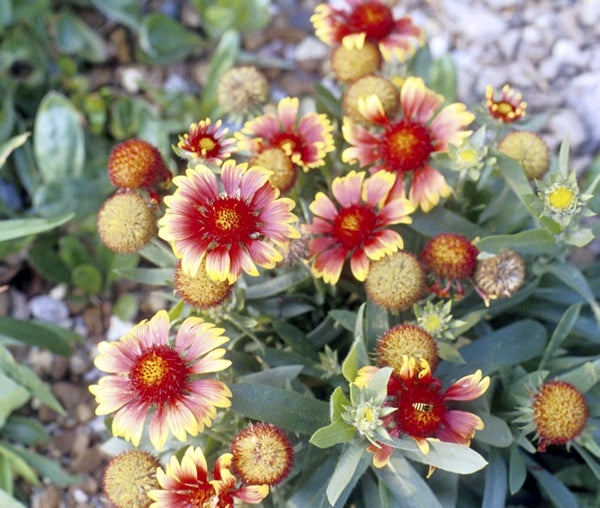Go native: Native and wild flowers for the landscape
Published 12:00 am Friday, May 27, 2016

- Cooperative Extension The Indian blanket flower or Gaillardia pulchella provides lots of color and attracts butterflies. It also self-seeds.
By Amy-Lynn Albertson
Rowan County Extension Director
SALISBURY — There are many beautiful annual and biennial flowers that are native to the Southeast. These plants can add color, flair and quick gratification to the impatient gardener.
Annuals are plants that complete their life cycle from germination to setting seed and dying in one season. A biennial completes its life-cycle in two growing seasons, with vegetative growth the first season, then flowering, seed production and death the second season.
Because these plants have such a short life span, it is crucial they bloom quickly. This is a great trait for those of us who are impatient gardeners. These plants generally have a longer bloom season than most perennials, and this can often be extended by removing spent blossoms.
Scorpianweed is a biennial that blooms in early spring, sets seed and dies. The seed germinates in the summer and develops into light green foliage with a gray mottling that remains through winter. In early spring, the plant sends up coiled flower stalks. As the buds open, the stalks straighten into showy lavender blue, bell-shaped flowers. The buds open slowly from bottom to top, so bloom time lasts well over a month. Scorpionweed prefers a moist, shady environment. It is a nice complement to deciduous ferns and hostas.
Coreopsis or tickseed is a terrific bloomer for several months in late spring and summer. It has a bright yellow daisy flower with a maroon center. Coreopsis grows to be 2-3 feet tall with finely divided delicate foliage. This plant prefers full sun and is tolerant of many soil types. Coreopsis can be sown directly in early spring. Once established, they will self seed year after year.
Gailardia pulchella or Indian blanket flower was given its common name by early settlers, since the blooms reminded them of the colorful blankets woven by the Native Americans. These flowers are daisy shaped, with red or maroon petals. Indian blanket flower is one of our toughest native flowers. It thrives on the coast in the hottest conditions and tolerates very poor soils. This plant is an excellent choice for coastal properties, meadows and xeriscaping, as well as butterfly gardens, containers or the flower bed. Indian blanket flower will continue to flower until the first frost and will readily self-seed.
Scarlet Sage is a long-blooming annual flower that reaches about 2-3 feet in height. The blossoms are inch-long, vibrant red, tubular flowers. These flowers are a favorite among hummingbirds. As the seeds mature, the plant also attracts hungry goldfinches. Scarlet sage is an adaptable plant that will bloom in full sun to part shade. It is also very tolerant of poor soils and will self-seed regularly.
Sunflower is our best known and most beloved garden plants. The sunflower is one of my all-time favorite flowers. The original sunflower from the prairies of the U.S. grows 6-10 feet in height. The sunflower is a tough plant that is widely adaptable; however it does require full sun. The large-flowered varieties prefer a rich, well-fertilized soil. However, with the numerous cultivars available, most any garden can be home to sunflowers. If you allow the seed to ripen on the plants, you will have a botanical bird feeder in the fall for cardinals, blue jays, woodpeckers, grosbeaks, chickadees and other winged friends.
The Schweinitz’s sunflower, Heilanthus schweinitzii, is native to the Piedmont. It grows from 3 to 6 feet tall and blooms from September until frost. The Schweinitz’s sunflower has small yellow flowers and it usually grows in clearings and edges of upland forests. In May 1991, the Schweinitz’s sunflowers was designated an endangered species. The remaining natural populations of this flower are threatened by residential and commercial expansion.
For more information about wildflowers or other horticultural topics contact the Rowan County Extension Center at 704-216-8970.




